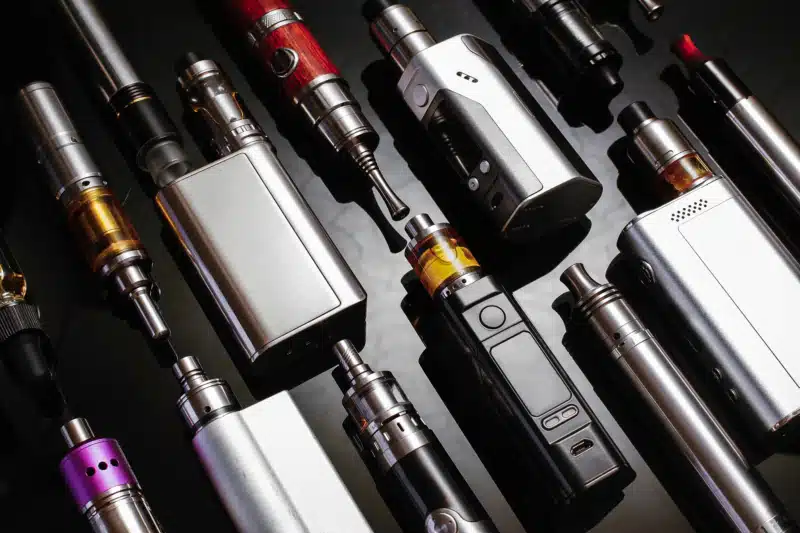Originally Published in Healthcare Business Today January 13, 2024
In a world dominated by technological advancements and medical breakthroughs, it’s alarming to witness the persistence of tobacco use among children and young adults. In November, the Centers for Disease Control and Prevention (CDC) published its 2023 findings on youth tobacco use, revealing worrisome trends, with nearly 10% (2.8 million) of students reporting current use of any tobacco product. While there was a slight decrease in tobacco use among high schoolers compared to 2022, the more alarming finding is that tobacco use increased among middle schoolers.
Despite rigorous anti-smoking campaigns and increased awareness of the health risks associated with tobacco, e-cigarettes/vapes were the most popular product among the surveyed youth for the 10th year in a row. This may be attributed to recent findings stating that between 2017 and 2022, the average volume capacity of disposable e-cigarettes increased 518% while prices decreased enabling wider access. The long-term impact of these habits is a cause for alarm, as tobacco use is a significant risk factor for developing Chronic Obstructive Pulmonary Disease (COPD), a chronic inflammatory lung disorder. Tobacco smoking is a habit that often trickles into adulthood with dangerous consequences and accounts for more than 70% of COPD cases. Cutting students off this dangerous habit is vital before it’s too late to reverse the effects.
Early Warning Signs Of COPD
Currently the third leading cause of death worldwide, COPD is traditionally associated with long-term tobacco use in adults. However, the CDC’s findings suggest that the disease may impact the younger generation due to an early onset of tobacco use among youth, potentially contributing to a future wave of COPD cases. To safeguard the well-being of young individuals and foster proactive healthcare, allergy and asthma specialists must implement early intervention measures for the prompt diagnosis of COPD.
Identifying symptoms such as depleted energy, recurrent respiratory infections, chest tightness, and shortness of breath during physical activities among youth is a critical first step. It can be done by initiating youth-focused diagnostic procedures. These may encompass pulmonary function tests to assess lung capacity, CT scans for detecting conditions like emphysema or screening for lung cancer, arterial blood gas analysis to evaluate lung efficiency in oxygen delivery and carbon dioxide removal, and laboratory tests to rule out genetic disorders.
Prevention Strategies
Given the strong link between tobacco use and COPD, preventive measures should prioritize discouraging youth tobacco consumption. Allergy and asthma specialists play a pivotal role in implementing these strategies, including:
- Education and Awareness: Strengthening educational programs highlighting tobacco use’s dangers is vital. Schools, communities, and healthcare providers should work collaboratively to impart knowledge about the risks associated with smoking.
- Early Intervention: Identifying and addressing tobacco use in its early stages is crucial. Physicians should routinely screen patients for tobacco use and provide support for smoking cessation.
- Promoting a Healthy Lifestyle: Encourage a healthy lifestyle that includes regular exercise, a balanced diet, and avoiding environmental pollutants.
- Access to Support Programs: Provide accessible and effective support programs for individuals trying to quit smoking. Counseling, nicotine replacement therapies, and behavioral interventions can significantly increase cessation rates.
Treatment Approaches For COPD
While prevention is key, managing COPD in affected adults requires a comprehensive approach. Upon diagnosing patients, collaboration between individuals, their families, and healthcare providers becomes pivotal for symptom management and handling flare-ups. Here are some measures that allergy and asthma specialists can recommend for COPD patients:
- Pharmacological Interventions: Medications, including bronchodilators and anti-inflammatory drugs, can help manage symptoms and improve lung function.
- Smoking Cessation Programs: For individuals with COPD who smoke, quitting is essential. Nicotine patches and other similar treatments can be given by a doctor to help with this.
- Pulmonary Rehabilitation: Enrolling young patients in pulmonary rehabilitation programs helps them learn breathing techniques and exercise strategies with the support of healthcare professionals.
- Oxygen Therapy: In advanced cases, supplemental oxygen may be necessary to improve oxygen levels in the blood.
New Start For Reducing COPD Cases And Tobacco Use
The CDC’s alarming findings on rising youth tobacco use underscore the ongoing battle against smoking. Urgent, multifaceted strategies, including education and robust support systems, are needed to curb COPD prevalence. Swift action is crucial to protect youth respiratory health and prevent a future burden of COPD, including collaborative efforts between patients and allergy and asthma specialists to develop personalized management plans, enhancing their quality of life and changing the trajectory of their future health.
Dr. Brian Reed is an experienced physician specializing in allergy and immunotherapy at AllerVie Health. He focuses on a broad range of conditions, including but not limited to, Allergic Rhinitis, Sinusitis, Dust, Pollen and Pet Allergies, Food Allergies, Childhood and Severe Asthma, and Biologics for Asthma.


